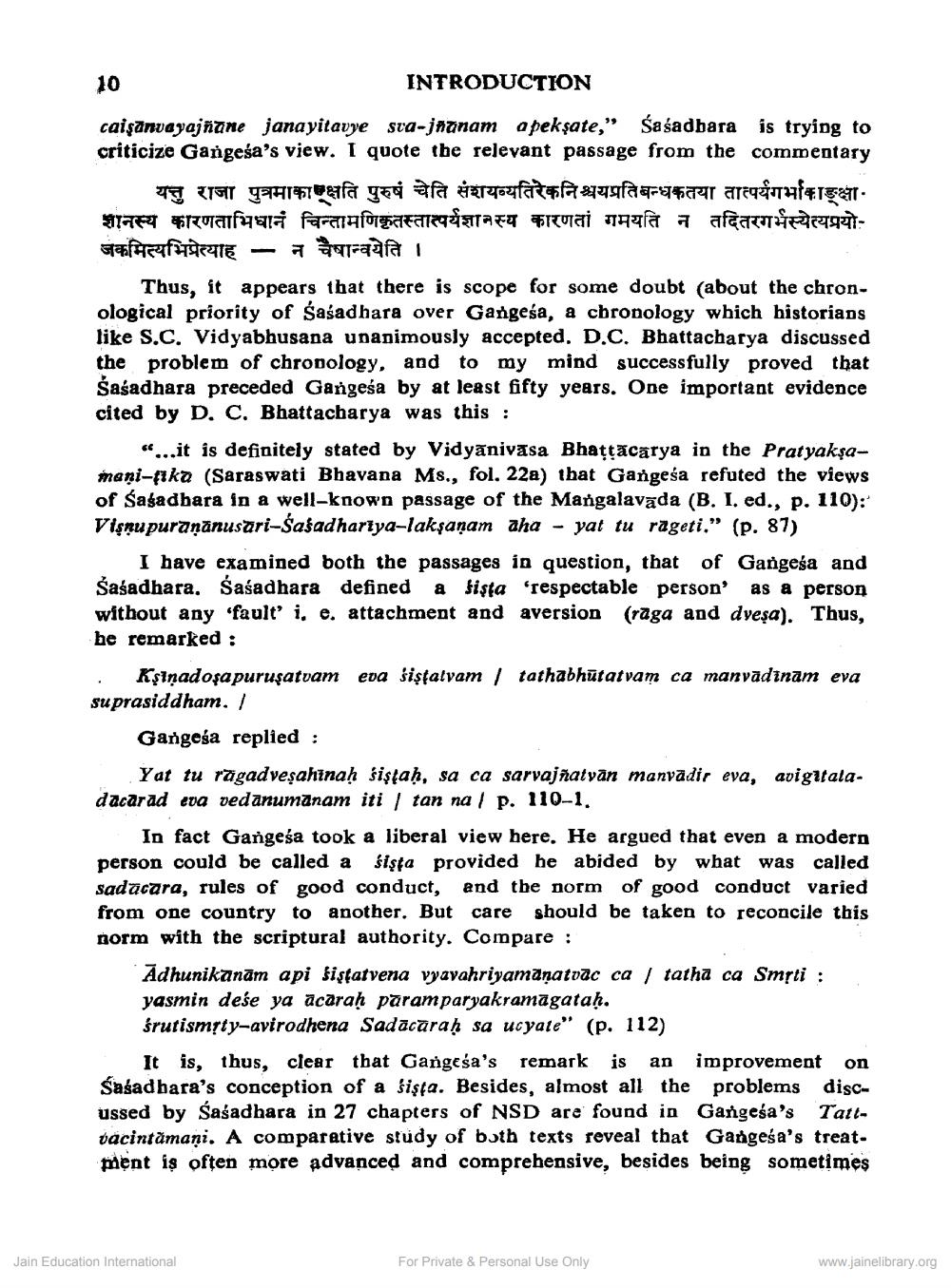________________
10
INTRODUCTION
caişanvayajñane janayitavye sva-jaunam a peksate," Śaśadbara is trying to criticize Gangesa's view. I quote the relevant passage from the commentary
यत्तु राजा पुत्रमाकाक्षति पुरुषं चेति संशयव्यतिरेकनिश्चयप्रतिबन्धकतया तात्पर्यगर्भाकाङ्क्षा. ज्ञानस्य कारणताभिधानं चिन्तामणिकृतस्तात्पर्यज्ञानस्य कारणतां गमयति न तदितरगर्भस्येत्यप्रयोजकमित्यभिप्रेत्याह - न चैषान्वयेति ।
Thus, it appears that there is scope for some doubt (about the chronological priority of Saśadhara over Gangesa, a chronology which historians like S.C. Vidyabhusana unanimously accepted. D.C. Bhattacharya discussed the problem of chronology, and to my mind successfully proved that Saśadhara preceded Gangesa by at least fifty years. One important evidence cited by D. C. Bhattacharya was this:
“...it is definitely stated by Vidyānivasa Bhattacarya in the Pratyakşamani-fika (Saraswati Bhavana Ms., fol. 22a) that Gangesa refuted the views of Sagadbara in a well-known passage of the Mangalavāda (B. I. ed., p. 110): Viskupuranānusari-Safadhariya-laksanam aha - yat tu rageti." (p. 87)
I have examined both the passages in question, that of Gangesa and Šašadhara. Śaśadhara defined a fişta 'respectable person' as a person without any 'fault' i. e. attachment and aversion (raga and dveşa). Thus, he remarked : : Kșinadoşapuruşatvam eva sistalvam / tathabhūtatvam ca manvādinam eva suprasiddham. /
Gangesa replied :
Yat tu rāgadveşahinaḥ śiştaḥ, sa ca sarvajñatvān manvadir eva, avigitala. dacarad eva vedanumanam iti / tan na / p. 110-1.
In fact Gangeša took a liberal view here. He argued that even a modern person could be called a sista provided he abided by what was called sadacara, rules of good conduct, and the norm of good conduct varied from one country to another. But care should be taken to reconcile this norm with the scriptural authority. Compare :
Adhunikānām api sisfatvena vyavahriyamanatvac ca / tatha ca Smrti : yasmin dese ya acarah param paryakramagatah. śrutismīty-avirodhena Sadācāraḥ sa ucyate" (p. 112)
It is, thus, clear that Gangesa's remark is an improvement on Sasad bara's conception of a šişta. Besides, almost all the problems discussed by Śaśadhara in 27 chapters of NSD are found in Gangesa's Tattvacintămani. A comparative study of both texts reveal that Gangeśa's treatMent is often more advanced and comprehensive, besides being sometimes
Jain Education International
For Private & Personal Use Only
www.jainelibrary.org




